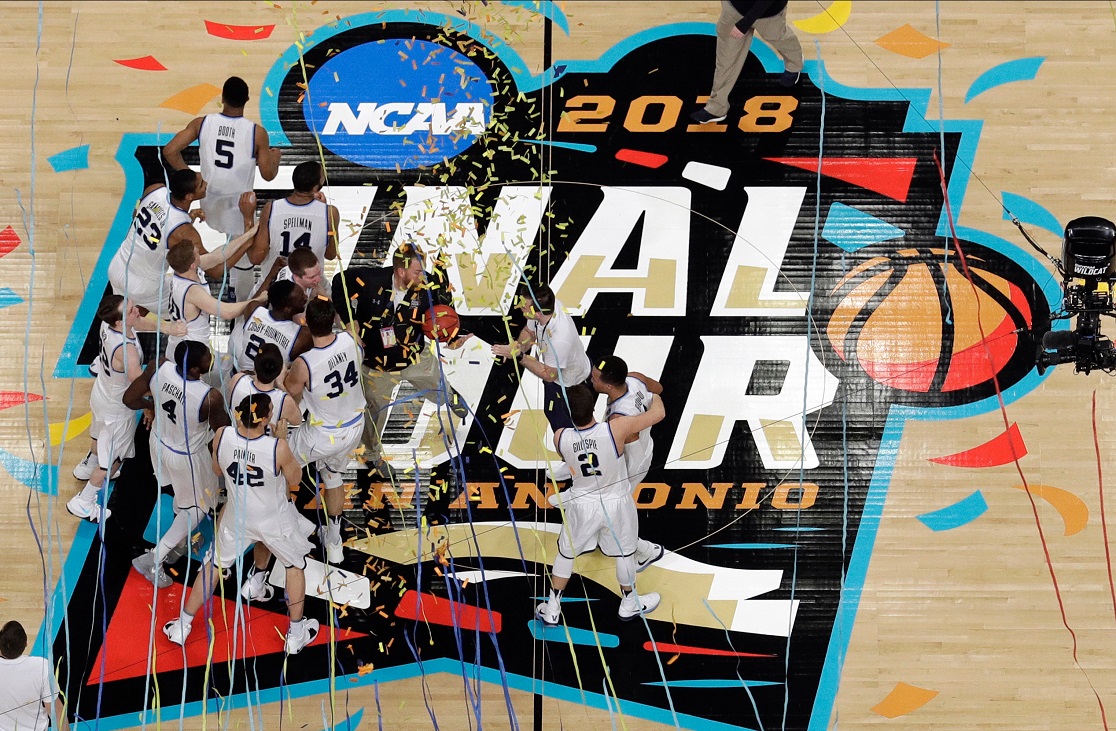
WASHINGTON (AP) — The Supreme Court on Wednesday seemed sympathetic to college athletes in a dispute with the NCAA over rules limiting their education-related compensation.
With the March Madness basketball tournament in its final stages, the high court heard arguments in a case about how colleges can reward athletes who play Division I basketball and football. Under current NCAA rules, students cannot be paid, and the scholarship money colleges can offer is capped at the cost of attending the school. The NCAA defends its rules as necessary to preserve the amateur nature of college sports.
But the former athletes who brought the case, including former West Virginia football player Shawne Alston, say the NCAA’s rules are unfair and violate federal antitrust law designed to promote competition.
The case is not about whether students can be paid salaries. Instead, the outcome will help determine whether schools can offer athletes tens of thousands of dollars in education benefits for things such as computers, graduate scholarships, tutoring, study abroad and internships.
During an hour and a half of arguments conducted by phone because of the coronavirus pandemic, there were both liberal and conservative justices who sounded supportive to the athletes’ case.
Justice Elena Kagan suggested that what was going on sounded a lot like price fixing. “Schools that are naturally competitors … have all gotten together in an organization,” she said, and used their power to “fix athletic salaries at extremely low levels.”
Justice Brett Kavanaugh agreed, saying “antitrust laws should not be a cover for exploitation of the student-athletes.” He told a lawyer for the NCAA that “it does seem … schools are conspiring with competitors … to pay no salaries for the workers who are making the schools billions of dollars.”
The NCAA’s argument that what makes college sports distinctive is that players are not paid got a cool reception from Justice Samuel Alito. He said athletes “get lower admission standards” and “tuition, room and board, and other things.” “That’s a form of pay,” he said, adding that the question is “the form in which they’re going to be paid and how much.”
Other justices expressed concerns about the consequences of ruling for the athletes. Chief Justice John Roberts suggested doing so could mean there will be a “wide number of rules that are subject to challenge, if not in this litigation, in subsequent cases.”
Justice Stephen Breyer called the case “tough.” “I worry a lot about judges getting into the business of deciding how amateur sports should be run,” he told the former players’ lawyer, Jeffrey Kessler, at one point.
A ruling for the former players would not necessarily mean an immediate infusion of cash to current college athletes. It would mean that the NCAA could not bar schools from sweetening their offers to Division I basketball and football players with additional education-related benefits. Individual athletic conferences could still set limits.
Justice Sonia Sotomayor asked the NCAA’s lawyer, Seth Waxman, about that at one point, asking why conferences wouldn’t just “impose those limits?”
Waxman responded that a national agreement is the “only solution” because of the pressures schools would face to offer additional benefits to lure top talent. If the NCAA’s restrictions are removed, that could create bidding wars for the best players. The NCAA says that could turn off fans and erase the distinction between professional and college sports.
In comments Wednesday, NCAA President Mark Emmert called the case “very, very important to the way in which college sports is governed.”
Whatever happens at the high court, changes seem on the way for how college athletes are compensated.
The NCAA is in the process of trying to amend its rules to allow athletes to profit from their names, images and likenesses. That would allow athletes to earn money for things like sponsorship deals, online endorsement and personal appearances. For some athletes, those amounts could dwarf any education-related benefits.
The NCAA wasn’t happy with the outcome the last time its rules were before the Supreme Court. In 1984, the high court rejected NCAA rules restricting the broadcast of college football. The justices’ ruling transformed college sports, helping it become the multibillion-dollar business it is today.
This time around, the former college athletes have some big-time supporters. The players associations of the NFL, NBA and WNBA all urged the justices to side with the ex-athletes, as did the Biden administration. So far, the former players have won every round of the case.
A decision from the justices is expected before the end of June, when the high court traditionally breaks for summer.
TOP PHOTO – FILE – Villanova players celebrate after the championship game of the Final Four NCAA college basketball tournament against Michigan, Monday, April 2, 2018, in San Antonio. Villanova won 79-62. (AP Photo/Morry Gash)










